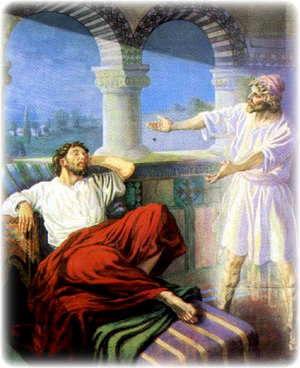Материалы
| Первое миссионерское путешествие Павла <= | => Павел и Сила в тюрьме |
Второе миссионерское путешествие Павла — в Македонию и Грецию
 Во втором миссионерском путешествии Павла сопровождал Сила, один из еврейских христиан. Из Антиохии они пошли снова в города Дервию и Листру (где Павла за несколько лет до этого чуть не убили камнями). Здесь Павел встретил молодого человека — Тимофея, ставшего одним из его вернейших помощников.
Во втором миссионерском путешествии Павла сопровождал Сила, один из еврейских христиан. Из Антиохии они пошли снова в города Дервию и Листру (где Павла за несколько лет до этого чуть не убили камнями). Здесь Павел встретил молодого человека — Тимофея, ставшего одним из его вернейших помощников.
Они прибыли в Троаду, город лежащий на азиатском побережье Эгейского моря. Ночью Павел увидел видение: «Предстал некий муж Македонянин, прося его и говоря: »Приди в Македонию и помоги нам«. После сего видения, тотчас мы положили отправиться в Македонию, заключая, что призывал нас Господь благовествовать там» — пишет Лука, сам по-видимому, присоединившийся к Павлу в Троаде. Македония была римской провинцией на северо-востоке Греции. На корабле они пересекли Эгейское море, пришли в город Филиппы. Вероятно, именно в Филиппах была основана первая европейская христианская церковь. В Филиппах же бросили Павла и Силу в тюрьму. Об этом прочтем в следующем рассказе. Из Филипп Павел пришел в Фессалоники, большой портовый город у Эгейского моря. Здесь уверовало великое множество Еллинов, а также часть Евреев. Среди другой же части Евреев поднялось большое возмущение, и тогда Павел с Силой вынуждены были перебраться в город Верию. Из Верии Павел прибыл в Афины, главный город Греции. Греция в тот период была уже под властью Рима. Ее переименовали в Ахаию. В Афинах Павел проповедовал Слово Божие перед философами и простым народом. И об этом мы прочтем в одном из следующих рассказов. Из Афин он пришел в Коринф, один из наиболее важных городов Римской Империи. В Коринфе Павел пробыл полтора года, за которые здесь была основана большая христианская церковь. Из Коринфа Павел возвратился по морю в Малую Азию и прибыл в большой город Ефес. Затем он продолжил свой путь, побывал в Иерусалиме и возвратился в город Антиохию.
Во втором путешествии Павел пробыл, примерно, три года (с 50 до 53 г. после Р.Хр.), пройдя за это время несколько тысяч километров.